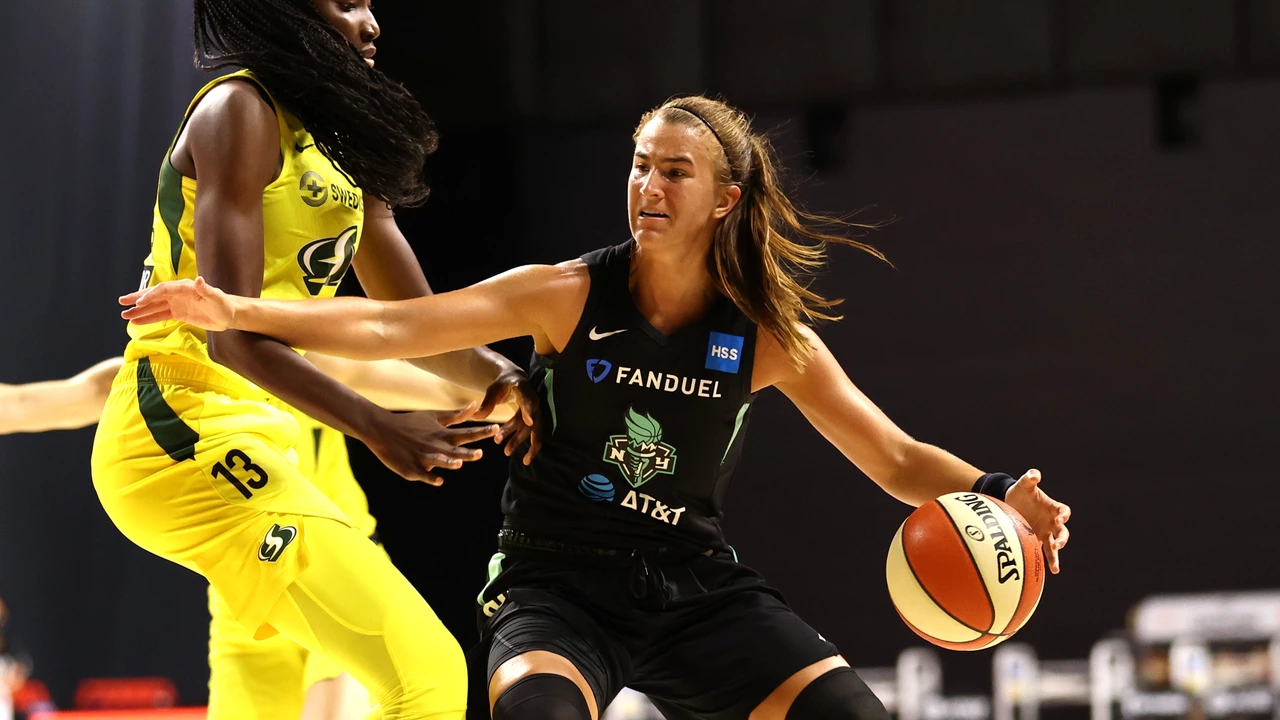Understanding the Disparity: The Scale and Economics of the Game
To begin this discussion on the pay disparity between the NBA and the WNBA, it is essential to get a handle on the sheer scale and economics of both games. This will be our first port of call and will, no doubt, build a solid foundation for the core of this piece.
In a nutshell, the NBA gets paid more than the WNBA due to fundamental economic principles that revolve around demand, revenue, and profitability. The NBA, with a history that spans over 70 years, maintains an impressive global outreach with fans spanning across various continents. The game has transformed into a multi-billion dollar industry with diverse revenue streams. On the contrary, the WNBA, with just over two decades under its belt, is still finding its feet from a financial perspective. Although both leagues function under the broad umbrella of professional basketball, the differences are rather stark, and these can be attributed to various factors which I will delve into in the subsequent sections.
Breaking Down the Numbers: Revenue Comparison
One must fully grasp the magnitude of the incomes generated by both leagues to come to terms with this subject. The issue of pay is intricately linked with the income generated by both leagues; the logic being that a greater revenue implies a higher pay scale.
To put it in perspective, the NBA hauled in an estimated $8.3 billion during the 2019/2020 season, whereas the WNBA managed to accumulate roughly $60 million. The math is clear, the gulf is alarmingly vast. A major reason for this discrepancy is the larger audience base of the NBA, which directly influences revenue from ticket sales, merchandise, sponsorship deals and television rights. Key to note is the enduring popularity of NBA players globally. Names like LeBron James, Stephen Curry, or even historical figures like Michael Jordan, have become household names. They bring immense value to the NBA, contributing to bolstered interest, viewership, and subsequently, much higher revenue. In contrast, while the WNBA has phenomenal players such as Sue Bird and Diana Taurasi, their popularity doesn’t quite reach the same scale as their male counterparts causing lower revenues.
Unraveling the Sponsorship Conundrum
The power of sponsorship in sports cannot be overstated. Mega-companies are willing to fork out big bucks to have their name associated with a successful league or player, and the NBA is no stranger to this lucrative union.
On an interesting note from my personal encounters as a fervent basketball spectator, some years back in Auckland, a local sports bar had a promotional night for an NBA match. The game was being broadcasted on several huge screens and the place was packed. Sponsorship logos were strewn all across the screen as well as the court. This single occurrence in New Zealand was a mere microcosm of the overwhelming global immersion and impact of NBA sponsorships which is often not the case for the WNBA. It's not just about the men's game having more sponsors, but also about the scale and financial power of these sponsors. Organisations are more keen to align themselves with the NBA due to its colossal global reach and impact, thus shelling out more money, and contributing to the higher revenues and subsequently higher salaries of the NBA.
Assessing Media Rights and Impact on Pay
An incisive look at media rights could shed more light on why NBA players earn considerably more than WNBA players. Media rights speak to the amounts television networks are willing to pay to broadcast games. And again, the numbers speak for themselves.
The NBA's broadcasting deal with ESPN and TNT amounts to approximately 2.66 billion per year, while the WNBA’s ESPN rights deal is worth around $25 million per year. The more substantial media income means the ability to pay higher wages to players. This financial muscle NBA wields grants it the wherewithal to provide unbelievably high paychecks to its players.
The Bright Side: WNBA Strides towards Pay Equity
Despite the glaring disparities in consumption and revenues between the NBA and WNBA, we can derive some solace from recent attempts made to ensure a more equitable pay in the WNBA. Emphasis on more, not equal, because total equality based on current revenue is economically impractical.
In 2020, the WNBA and its players' union signed a groundbreaking eight-year collective bargaining agreement that promises to provide a significant increase in salary and additional benefits for the players. The deal raises the average WNBA salary to $130,000 and sets a $1.3 million limit for the entire team’s top players. Though still dwarfed by NBA wages, this is a definite step in the right direction. Slapping an exclamation mark on this progressive move was an important endorsement by non-other than LeBron James himself, who lauded this development. Now wouldn't we all want a pat on the back from the King himself?
In closing, it is worth acknowledging that the sea of difference in player remunerations is not borne out of gender biases, but is primarily underpinned by economics. By virtue of this, the scales will gradually balance out as the business of the WNBA grows. It’s all about the numbers, folks. In the meantime, let's keep supporting our beloved basketball players, both male and female, for the sheer joy they bring to our lives. Nothing but net!

